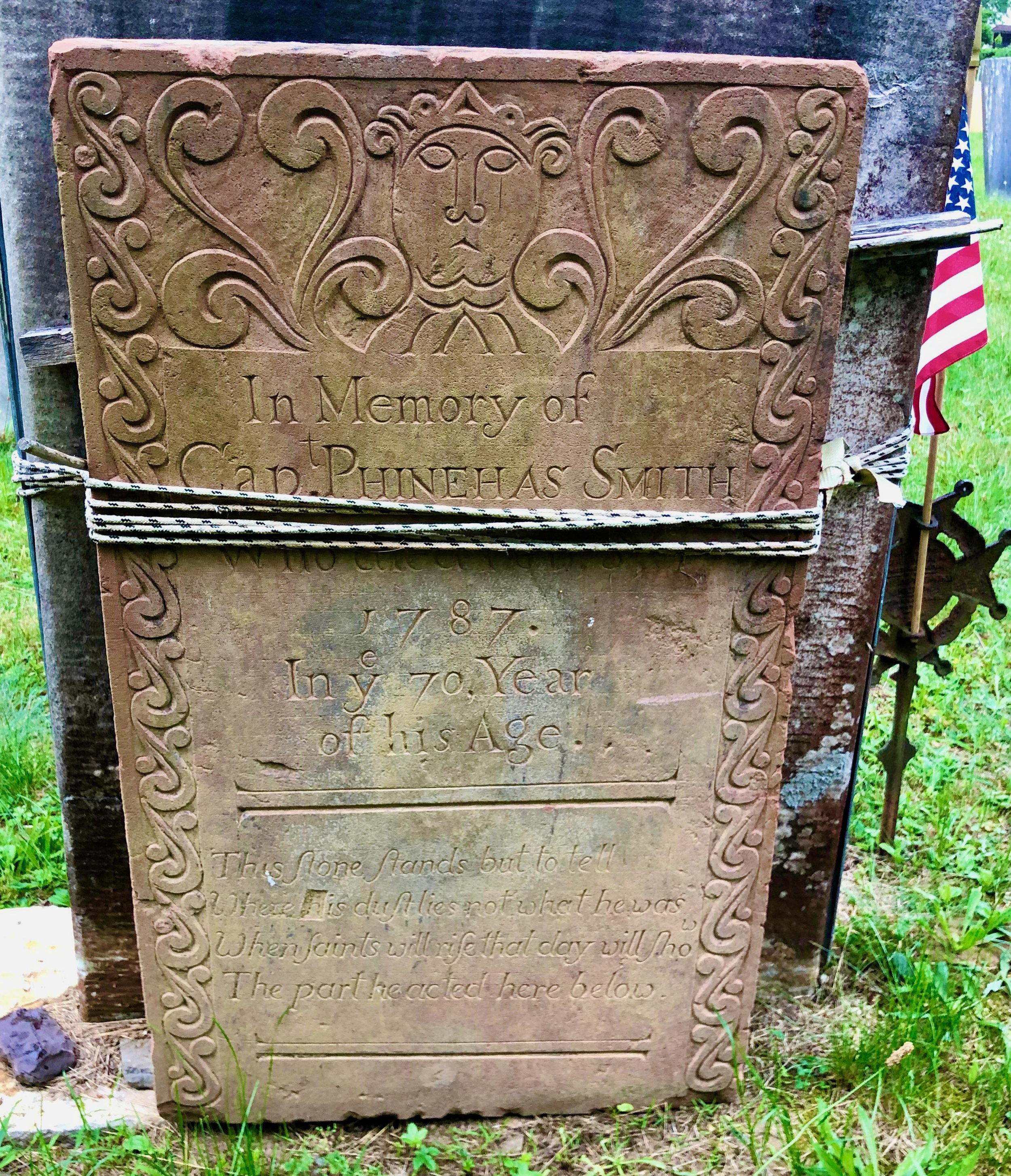PHINEHAS SMITH
Who died ——
1787
In ye 70. Year
of his Age.
This stone stands but to tell
Where his dust lies not what he was
When saints will rise that day will show
The part he acted here below.
To understand this stone, you must keep in mind the traditional Puritan teaching that God has already determined which souls are saved and which are doomed, that all our good works and virtuous behavior in this world have no influence in His and – critically – that none of us can presume to know our fates. Indeed anyone who thinks he knows he is saved is actually going straight to Hell, since he presumes to know the judgment of God.
Now read the brief quatrain through the lens of these deeply-held beliefs. First, note the omniscient, commanding, “pay attention, class” voice of the narrator. One can easily imagine this to be the voice of a stern Minister or Deacon, certainly someone vested in the authority of the established church.
This stone, we are admonished, this worldly physical object, has nothing to say about the soul of Phinehas Smith. Yes, it marks where he is buried but that’s all – it and he and all of us are nothing but vanity and base mortal stuff. There is an irony here, to be sure – the stone may have no worth, but whoever penned the verse helped create it (and perhaps pay for it), and wants us to read the words carefully.
These lines then offer a non-too-subtle rebuke of all the other stones around him, with their fine eulogies enumerating so-and-so’s many virtues, or hopeful hymns about soaring joyfully to heaven. “Humbug!” the verse tells us, “That is all just vanity – those fine words amount to nothing, and the idea that the soul of the deceased is happy in paradise is outrageous presumption.
Only when the saints rise (itself a nice choice of vocabulary familiar to any Puritan) will the significance of his time and acts on Earth (here below) be revealed. “Ignore those flattering inscriptions” the sermon continues, “Soon enough we’ll all know who’s who.”
On every side, contemporaneous stones enumerate the virtues and rectitude of the deceased as examples to the reader on how to live, and express confidence that they have died in the Lord and are blessed. Here is another voice, teaching a very different lesson for our improvement, reaching back to the old Puritan faith in a time of changing and conflicting attitudes towards death and eternity. I would like very much to know more about this anonymous author, to understand how she or he got along with (or did not get along with) others in the community.
